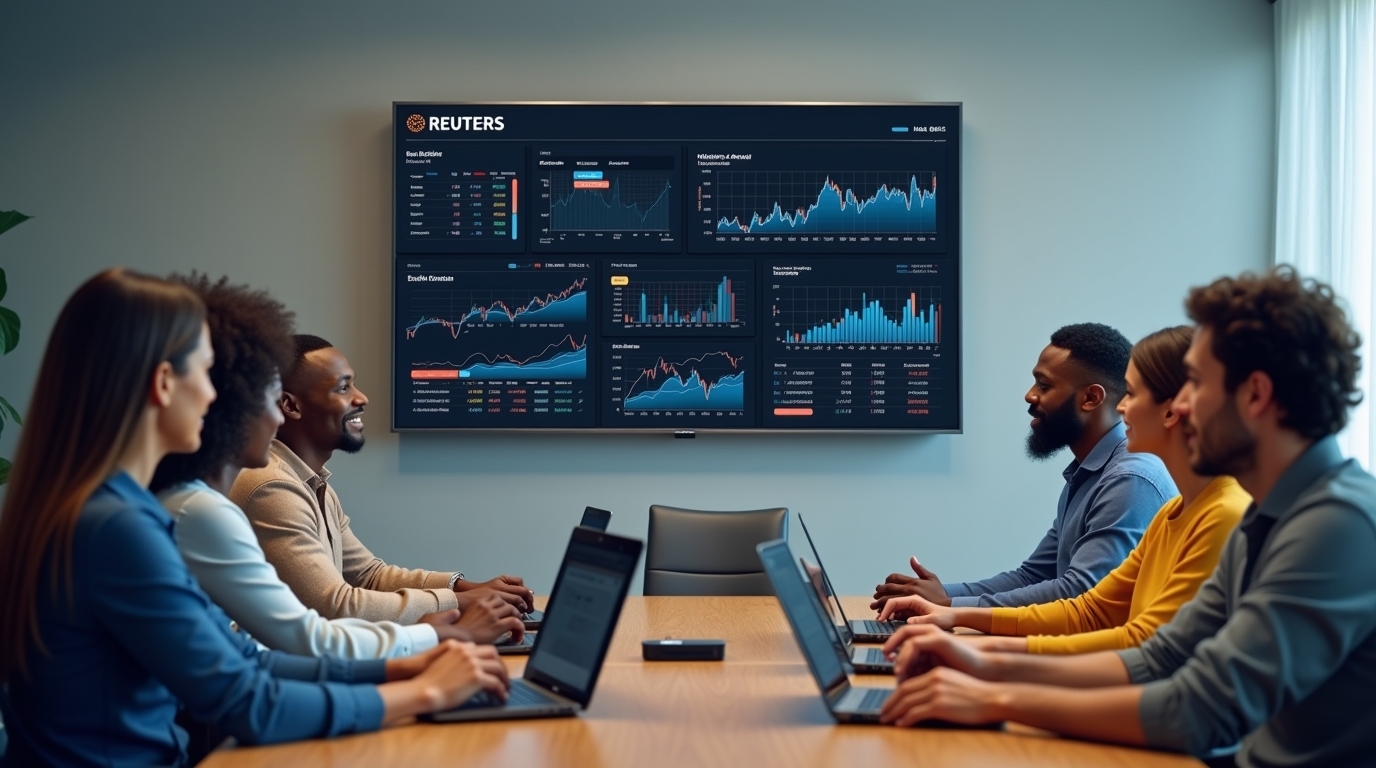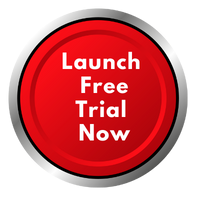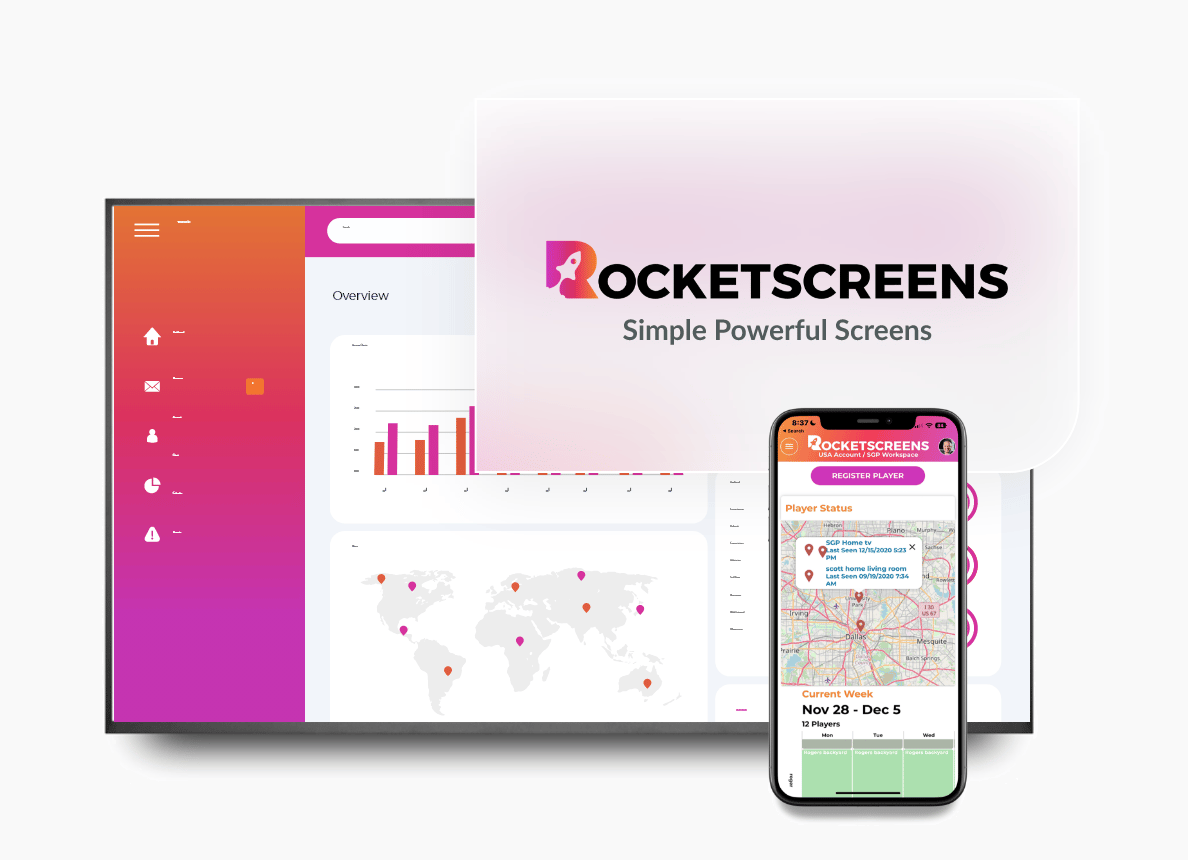
Why Show a Live Website on Digital Signage?
Your digital screens have a lot of potential. Too often, however, they end up showing the same rotation of static images, week-old announcements, or a generic news ticker. The information becomes background noise, and employees or customers learn to ignore it.
But the information that powers your business isn't static. It lives on your company intranet, your sales dashboard, your project management tool, and your social media feeds. This content is dynamic, updated in real-time, and provides genuine value. So, why are your screens stuck in the past?
This is where live website integration comes in.
The concept is simple: instead of uploading a screenshot, you display the actual, live webpage directly on your screens. This connects your passive displays to the active, living data sources you use every day. Suddenly, your screens are no longer just digital posters; they are real-time information hubs.
Displaying live web content transforms your signage from a "nice-to-have" to a "need-to-have" communication tool. It ensures your screens show what matters, right when it matters. This simple shift helps you deliver timely updates, boost transparency, and create a more engaged and informed environment.
The Challenge: Websites Aren't Built for Signage (But They Can Be)
If it's so simple, why isn't everyone just plugging a computer into a TV and opening a browser? Many have tried, and they quickly discover a host of frustrating problems. Displaying a webpage effectively on a large screen is more complicated than it looks.
Most "solutions" are clunky, unreliable, and create more work for your IT team.
Formatting and Resolution Issues
Websites are typically designed for a desktop or mobile experience. They are meant to be seen from a foot or two away, not from across a room. Fonts are small, layouts are dense, and the most important information might be "below the fold," requiring a scroll.
When you put that same webpage on a 55-inch TV in a 16:9 landscape format, it often becomes an unreadable jumble of tiny text and poorly scaled images.
Complex Navigation and Clutter
Web pages are full of interactive elements that are useless on a non-touch display. Think about navigation menus, "Contact Us" buttons, cookie consent pop-ups, and third-party advertisements. These elements clutter the screen and distract from the key information you actually want to show. You may only want to display a single chart from a dense dashboard, but you end up with the entire page's navigation.
Login and Authentication Hurdles
This is the biggest roadblock for most businesses. The most valuable information—your sales data, analytics, and internal reports—is locked behind a secure login.
How do you make a screen in your lobby "log in" to your Salesforce dashboard? The common workarounds are a maintenance nightmare. You might use a dedicated mini-PC with a saved password, but that device needs updates, crashes, and logs itself out, requiring someone to physically plug in a keyboard and mouse to fix it. This is also a significant security risk, as credentials are often stored in plain text or in a browser's cache.
Lack of Automation and Reliability
Once you get the page to display, how do you keep it fresh? Someone has to remember to refresh the browser to pull the latest data. What happens when the browser crashes or the PC reboots for an update? The screen goes blank, showing a desktop or an error message until someone manually intervenes. This lack of automation makes the entire setup unreliable and unprofessional.
What is Live Website Integration for Digital Signage?
True live website integration is not a full screen browser hack. It's a specific, powerful feature built into a modern digital signage platform.
This feature allows you to securely and reliably pull web content into your signage content management system (CMS). A proper platform solves all the challenges mentioned above. It acts as a smart, automated, and secure browser purpose-built for displaying content on screens.
When looking for a platform with this capability, you should look for a few key functions:
- Secure Authentication: The system should be able to securely store login credentials and handle complex authentication (like single sign-on or multi-factor authentication) on its own servers, never exposing that data on the local player.
- Content Clipping (Region Capture): You shouldn't be forced to show the entire webpage. A good tool lets you "clip" a specific part of the page—just the sales leaderboard, the main chart, or the news feed—and display only that region, free of menus and ads.
- Automatic Refresh Intervals: You should be able to set it and forget it. You determine how often the content should refresh, whether it's every 60 seconds for a live dashboard or every 30 minutes for a news page.
- Layout Management: Displaying a website shouldn't be an all-or-nothing affair. The platform should let you place your live web content into a zone within a larger layout, right alongside a weather widget, a company announcement, and a welcome message.
Powerful Use Cases: How to Use Website Integration Effectively
When you can securely display any webpage, your content possibilities become nearly endless. Here are some of the most effective ways different departments can use live website integration.
For Corporate Communications (Internal Comms)
Your internal communications team works hard to keep everyone on the same page. Live web content can be their most powerful ally.
- Displaying the Company Intranet: Most employees don't check the company intranet portal every day. Put the most important parts on your screens. Show the "Latest News" widget from your SharePoint site, the company events calendar, or the employee spotlight section.
- HR and Benefits Information: Keep critical HR updates visible. Display the homepage of your benefits portal (like Workday or BambooHR) during open enrollment. Show a live feed of new job postings from your "Careers" page to encourage internal referrals.
- Company News & Blog: Is your marketing team publishing great content on the company blog? Showcase it internally. Display the blog's homepage to ensure employees see the same stories your customers do.
For Data and Business Intelligence (BI)
Data is useless if it stays hidden in a report. Web-based dashboards are meant to be seen, and digital signage is the perfect way to share them with the whole team.
- Live BI Dashboards: This is one of the most valuable uses. Display your key metrics dashboards from web-based BI tools like Power BI, Tableau, or Looker Studio (formerly Data Studio). A sales team can see their leaderboard update in real-time. A marketing team can watch campaign performance. An operations team can monitor support tickets or website uptime.
- Google Analytics: Put your website's real-time traffic map or key conversion goals on a screen for your marketing and web teams to see.
- Custom Internal Dashboards: Nearly every company has a custom-built web tool with critical data. Maybe it’s a proprietary sales tracker or an operations monitor. With secure website integration, you can finally put that dashboard on a wall-mounted screen for everyone to see.
(Pitch): While RocketScreens can display any web-based dashboard, it also offers direct, API-based integrations for tools like Power BI and Google Analytics. This gives you a cleaner, faster, and even more reliable way to show your most important data in a beautifully formatted way.
For Sales and Marketing Teams
Keep your teams aligned and motivated by surrounding them with the data and social proof that drives them.
- CRM Dashboards: Display a live sales leaderboard or quarterly goal tracker directly from your web-based CRM like Salesforce or HubSpot. It creates a healthy, competitive pulse in the sales pit.
- Social Media Feeds: Show a live feed of your company's X (Twitter) profile, LinkedIn page, or Instagram feed. This is great for lobbies to show visitors you're active and engaged. It also helps employees stay on top of the company's public-facing conversations.
- Customer Testimonials: Dedicate a screen (or a zone on a screen) to displaying the live "Reviews" or "Case Studies" section of your website. It’s a great confidence builder for employees and a powerful piece of social proof for visitors.
For Operations and Logistics
In fast-moving operational environments, real-time information is not just helpful—it's essential for safety and efficiency.
- Supply Chain Dashboards: Display web-based tracking systems to show inventory levels in the warehouse, shipping statuses for logistics, or supplier delivery schedules.
- Production Metrics: On the factory floor, display a live web dashboard showing Overall Equipment Effectiveness (OEE), production line status, or safety incident counters.
- Support Queues: In a call center or IT department, show a live dashboard from a tool like Zendesk or Jira displaying the current support ticket queue, wait times, and resolution rates.
For Customer-Facing Environments (Lobbies, Retail)
First impressions matter. Use your lobby and in-store screens to show dynamic, relevant content.
- Your Own Website: This seems obvious, but it's effective. Set your lobby screen to display your company's homepage or, even better, the "Products" or "Services" page.
- News and Weather: Display a clean, professional news website or a specific weather radar page. It's a classic for a reason—it's useful and keeps visitors engaged while they wait.
- Queue or Appointment Management: If your business uses a web-based check-in or queue system (like a "Now Serving" page), display it on a large screen so customers know their status.
How to Set Up Live Website Integration (The Easy Way)
If you've tried the DIY route, you know the pain. Here is how a dedicated digital signage platform makes it simple.
Step 1: Ditch the Fullscreen Browser "Hack"
The first step is to stop thinking of a mini-PC and a browser as a signage solution. This method is unreliable, insecure, and requires constant manual fixing. A true digital signage player is a small, dedicated piece of hardware (or a smart TV app) that is centrally managed and built for one purpose: displaying content 24/7.
Step 2: Choose a Secure Digital Signage Platform
This is the most important part. A platform like RocketScreens is designed to handle this from the ground up. It gives you a central, cloud-based dashboard where you manage all your screens, content, and schedules from anywhere. The platform's software runs on your players, pulling content automatically.
Step 3: Securely Authenticate Your Content
This is where RocketScreens shines. Instead of saving a password in a browser on a device, you use the RocketScreens platform to handle the login. For many apps, it uses secure, pre-built integrations. For any other site, it offers a secure way to record the login steps. This process happens on a secure server, and your credentials are encrypted and protected, never exposed on the local device.
Step 4: Add Your Website URL
In your platform's dashboard, you simply choose the "Website" or "Web Page" content type. You copy the URL you want to display—whether it's a Power BI report, a news site, or your intranet login page—and paste it in.
Step 5: Configure Your Display
This is where you fine-tune the content.
- Set the Refresh Rate: Tell the system how often to fetch a new version of the page.
- Clip Your Region: Use a simple visual tool to draw a box around the exact part of the website you want to show. This instantly removes all the surrounding menus, ads, and other visual clutter.
- Add it to a Playlist: Add your new live website content into a playlist just like you would an image or a video. You can have it rotate with other content or use a layout editor to show it in a zone alongside other apps.
Best Practices for Displaying Web Content on Screens
Just because you can show any website doesn't mean you should. Follow these simple tips to make sure your web content is effective and easy to read.
Design for Distance
Remember the "10-foot rule." Can someone standing 10 feet away understand the content at a glance? If you're displaying your own internal dashboards, consider creating a "signage-friendly" version with larger fonts, high-contrast colors, and bigger charts.
Prioritize "At-a-Glance" Information
The best content for digital signage is simple. Avoid text-heavy pages, long articles, or complex spreadsheets. Focus on key numbers, headlines, and data visualizations. Dashboards, leaderboards, and news headlines work best.
Mind the Refresh Rate
Find the right balance for your content. A live sales dashboard might need to refresh every two minutes to be useful. A company blog, on the other hand, might only need to refresh every hour. Setting the refresh rate too fast can be distracting and may overload your source, while setting it too slow defeats the purpose of "live" data.
Handle Dynamic Content Carefully
Avoid pointing your screens at websites that have auto-playing videos (with sound!), pop-up windows, or complex hover-over animations. These elements are designed for a mouse and keyboard and will not work well on a passive display.
Secure Your Logins
It's worth repeating: never use a browser's "Remember Me" function on a public-facing computer as your login method. Use a platform like RocketScreens that is built to handle credentials securely in the cloud, keeping your sensitive data safe.
Beyond the Browser: Direct Integrations vs. Website Integration
Displaying a live website is a flexible way to get any content on your screens. But sometimes, an even better option is available: a direct, API-based integration. It's helpful to understand the difference.
What's the Difference?
- Website Integration: This method captures a visual snapshot of a live webpage. It's like a smart, automated screenshot. Its main strength is its versatility—it works with any URL.
- Direct Integration (API): This method connects directly to the data source (like Salesforce, Google Slides, or SharePoint) using an Application Programming Interface (API). It pulls the raw data—the number, the headline, the image, the text—and then formats it using a pre-designed, screen-optimized template.
Benefits of Direct Integrations (Like RocketScreens' 100+ Apps)
When a direct integration is available, it's often the better choice.
- Perfect Formatting: The content is automatically formatted into clean, beautiful, and readable templates designed specifically for digital signage. No clipping, no ads, no menus.
- Greater Reliability: Pulling small pieces of data via an API is typically faster and more stable than loading an entire, complex webpage.
- Mix and Match Content: This is a huge advantage. You can pull a single KPI from HubSpot, a chart from Power BI, and a post from LinkedIn and display all three pieces of data together in one clean layout. This is difficult to do with website clipping.
When to Use Each
- Use Website Integration when: You have a custom-built internal dashboard, a proprietary web tool, a specific news page you want to show, or any web-based tool that doesn't have a direct API integration.
- Use Direct Integration when: You want to display content from common, popular applications. RocketScreens offers over 100 direct integrations for apps like Microsoft 365 (SharePoint, Teams, Power BI), Google Workspace (Slides, Sheets, Docs), social media, and more.
Make Your Screens Work Smarter with Live Web Content
Your digital screens are a powerful, untapped asset for communication. By connecting them to live web content, you break them free from static, boring playlists. You turn them into dynamic, automated channels that deliver the real-time information your teams and customers actually need.
Whether you're sharing a critical sales dashboard, celebrating company news from your intranet, or displaying your latest social media posts, live website integration is the key to making your content relevant.
Ready to stop showing static slides? A platform like RocketScreens makes it simple and secure to display any website or connect directly to your 100+ most important apps. Your data, your content, displayed anywhere.





